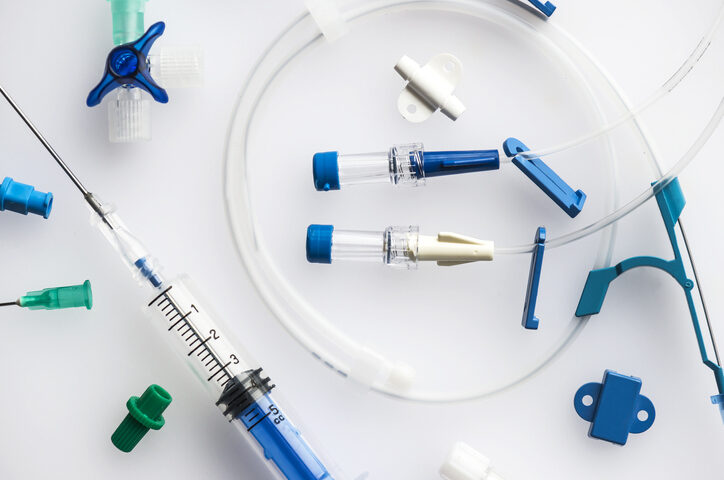Injection molded components are integral to many functional assemblies and multipart products. For parts to work and fit together as intended, dimensions must be specified on component drawings. Some of those dimensions are less forgiving of drifting away from the defined dimension. Providing injection molding tolerances for those dimensions is critical. Below we examine the importance of tolerance and the factors that can impact it.
What is Injection Molding Tolerance?
Before tolerance is discussed, precision and accuracy must be understood. Colloquially, the terms are often used interchangeably, but there is an important distinction in manufacturing. Regarding injection molding, precision is the repeatability of producing a part with specific dimensions without any introduced or random error. This means the more precise a process is, the more likely products will be identical from run to run. This doesn’t mean the part is acceptable. It is possible to produce identical parts that don’t meet specifications. With injection molding, precision is usually maintained if processing parameters are unchanged. Improper mold maintenance can result in declining precision over time.
Accuracy is a degree of conformance to a dimension. The more accurate a process is, the closer it is to the exact measurement. Accuracy looks at a single measurement and does not directly correlate with precision. It is possible to mold a highly accurate part that isn’t reproducible or to consistently reproduce a molded part with poor dimensional accuracy. Therefore, precision and accuracy are both needed.
While injection molding generally has good precision and accuracy, many factors can influence them and create a variance. Injection molding tolerance is the acceptable variance for each dimension. The tolerance can vary from dimension to dimension, with some being more critical than others. It is usually expressed as a +/- mm (e.g., +/- 0.1 mm).
Importance of Proper Tolerancing
Dimensional tolerance tells the injection molder how critical a specific dimension is. Some products require tighter tolerances, such as those with exacting function, fit, safety, and performance requirements. For example, parts intended to snap together may not work as intended if the tolerance is not specified.
Another reason to ensure proper tolerances is that molds are an expensive investment. Cavities in the mold are machined from hardened steel, so no dimensional change occurs during molding. Proper tolerancing will prevent that investment from being wasted if components don’t fit or function as required. Poorly defined specifications, including those over-dimensioned or with over-constrained tolerances, increase costs.
Drawings should focus on dimensions and tolerances that are critical. Giving all dimensions tight tolerances overburdens manufacturing and inspection, which drives up costs.
Challenges Achieving Tight Tolerances
Several factors can affect precision and tolerance in injection molding. These include the quality of the design, manufacturing processes (e.g., cavity temperature), the resin being used, and how well the part is supported during ejection from the mold. Additionally, tool maintenance and proper cleaning are key components to ensuring an accurate and consistent level of precision and accuracy. By paying attention to detail during each step of the injection molding process, engineers can ensure a closer level of precision and a higher degree of tolerance.
Achieving tight tolerances can be challenging. Several factors can affect the ability to achieve tight tolerances, including:
- Resin selection: The resin used for injection molding can affect the ability to achieve tight tolerances. Some materials have a higher shrink rate than others, which can affect the accuracy of the final product.
- Injection molding machine: The molding machine’s accuracy and repeatability play a critical role in achieving tight tolerances. For example, high-pressure injection molding machines can achieve tighter tolerances than lower-pressure machines since greater pressure on the melted resin results in better material flow.
- Part design: The part design is critical for achieving tight tolerances. Design for manufacturability (DFM) analysis can ensure the part can be manufactured. For example, varying wall thickness can result in uneven shrinkage since a thicker section will shrink more, resulting in warpage.
- Tooling design: The mold tooling design is critical to achieving tight tolerances. The mold must be designed to account for the material’s shrinkage, flow, and cooling characteristics to achieve the desired accuracy and precision.
- Process control: The injection molding process requires tight control over several variables, including temperature, pressure, and injection speed, to achieve tight tolerances. Any variation in these variables can affect the final product’s accuracy.
- Quality assurance: The fact that parts shrink is a universal understanding. However, when parts achieve dimensional stability can be complicated and dependent on the material, fillers, part geometry, and processing conditions. If dimensional checks are conducted before the part has cooled enough to be stable, measurements will be inaccurate. While this doesn’t affect the ability to achieve tight tolerances, it can make it appear that parts are out of tolerance when they are not, or vice versa.
Omega Delivers Tight Injection Molding Tolerance For Demanding Applications
When you need tight tolerance injection molded parts for medical products, Omega offers quick turnaround tooling, molding, and value-added services that will meet your expectations for injection molding tolerance and precision. Our DFM services and predictive modeling with Moldflow® simulation software will ensure that any issues are found before time and money are wasted.
Contact us for a quote on your low- to mid-volume, tight-tolerance medical product.

